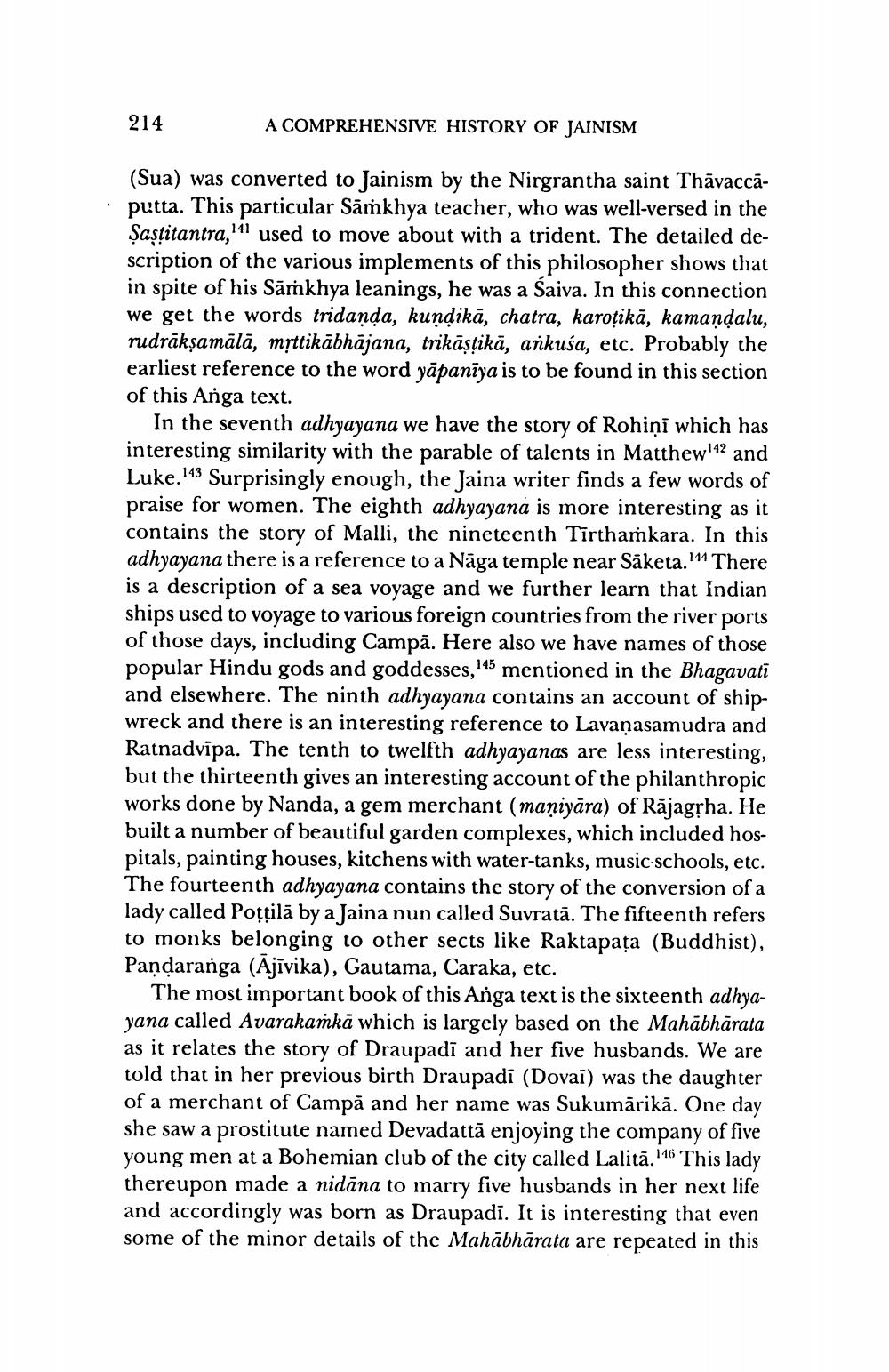________________
A COMPREHENSIVE HISTORY OF JAINISM
(Sua) was converted to Jainism by the Nirgrantha saint Thāvaccaputta. This particular Samkhya teacher, who was well-versed in the Sastitantra,141 used to move about with a trident. The detailed description of the various implements of this philosopher shows that in spite of his Sāṁkhya leanings, he was a Śaiva. In this connection we get the words tridanda, kunḍikā, chatra, karoṭikā, kamaṇḍalu, rudrākṣamālā, mṛttikābhajana, trikāṣṭikā, ankusa, etc. Probably the earliest reference to the word yapaniya is to be found in this section of this Anga text.
214
In the seventh adhyayana we have the story of Rohini which has interesting similarity with the parable of talents in Matthew112 and Luke.143 Surprisingly enough, the Jaina writer finds a few words of praise for women. The eighth adhyayana is more interesting as it contains the story of Malli, the nineteenth Tirthamkara. In this adhyayana there is a reference to a Naga temple near Saketa."" There is a description of a sea voyage and we further learn that Indian ships used to voyage to various foreign countries from the river ports of those days, including Campã. Here also we have names of those popular Hindu gods and goddesses, 145 mentioned in the Bhagavati and elsewhere. The ninth adhyayana contains an account of shipwreck and there is an interesting reference to Lavaṇasamudra and Ratnadvipa. The tenth to twelfth adhyayanas are less interesting, but the thirteenth gives an interesting account of the philanthropic works done by Nanda, a gem merchant (maniyāra) of Rajagṛha. He built a number of beautiful garden complexes, which included hospitals, painting houses, kitchens with water-tanks, music schools, etc. The fourteenth adhyayana contains the story of the conversion of a lady called Poṭṭilā by a Jaina nun called Suvrata. The fifteenth refers to monks belonging to other sects like Raktapata (Buddhist), Pandaranga (Ajivika), Gautama, Caraka, etc.
The most important book of this Anga text is the sixteenth adhyayana called Avarakaṁkā which is largely based on the Mahabharata as it relates the story of Draupadi and her five husbands. We are told that in her previous birth Draupadi (Dovai) was the daughter of a merchant of Campa and her name was Sukumārikā. One day she saw a prostitute named Devadatta enjoying the company of five young men at a Bohemian club of the city called Lalita. 116 This lady thereupon made a nidāna to marry five husbands in her next life and accordingly was born as Draupadi. It is interesting that even some of the minor details of the Mahabharata are repeated in this




